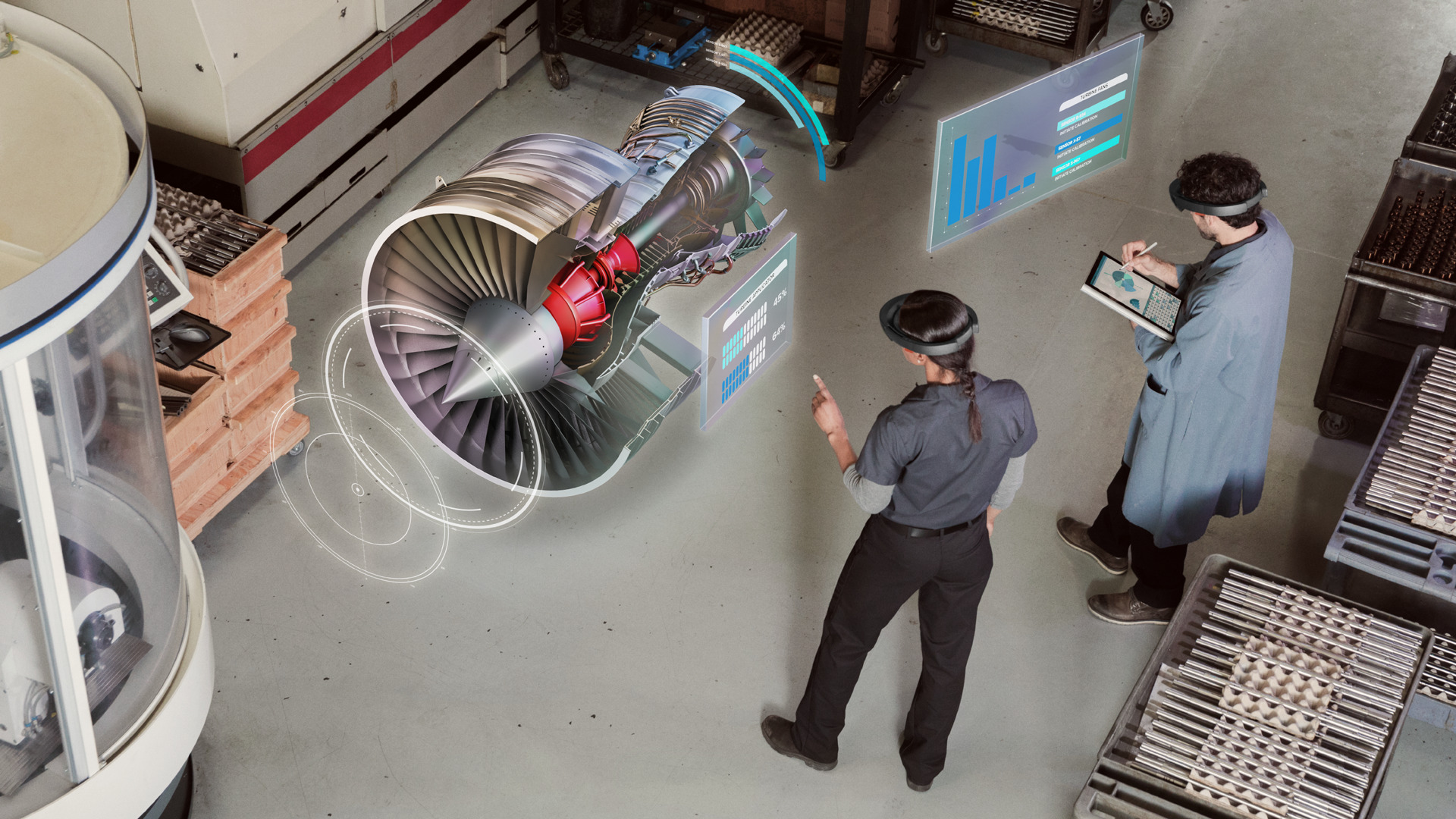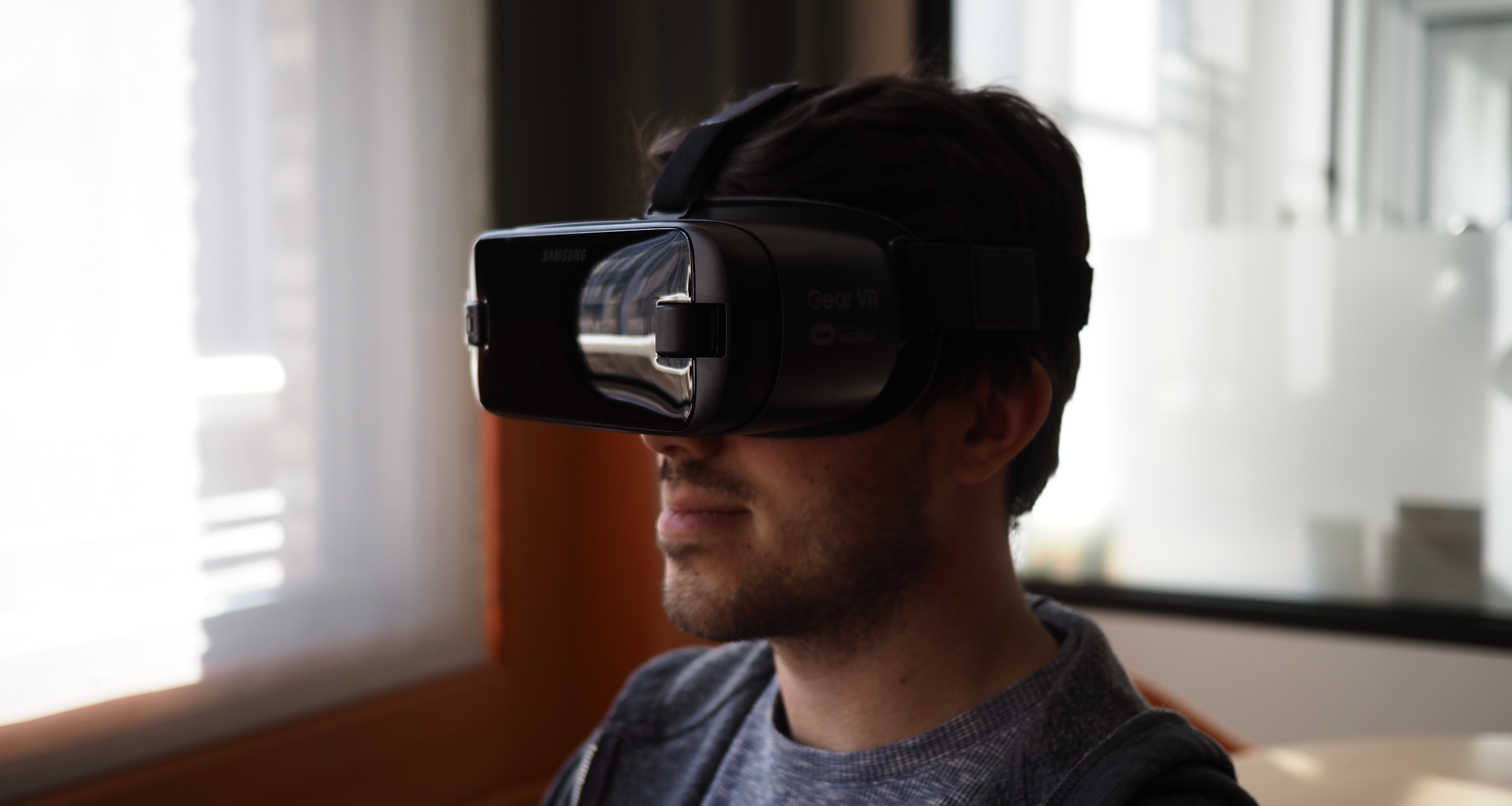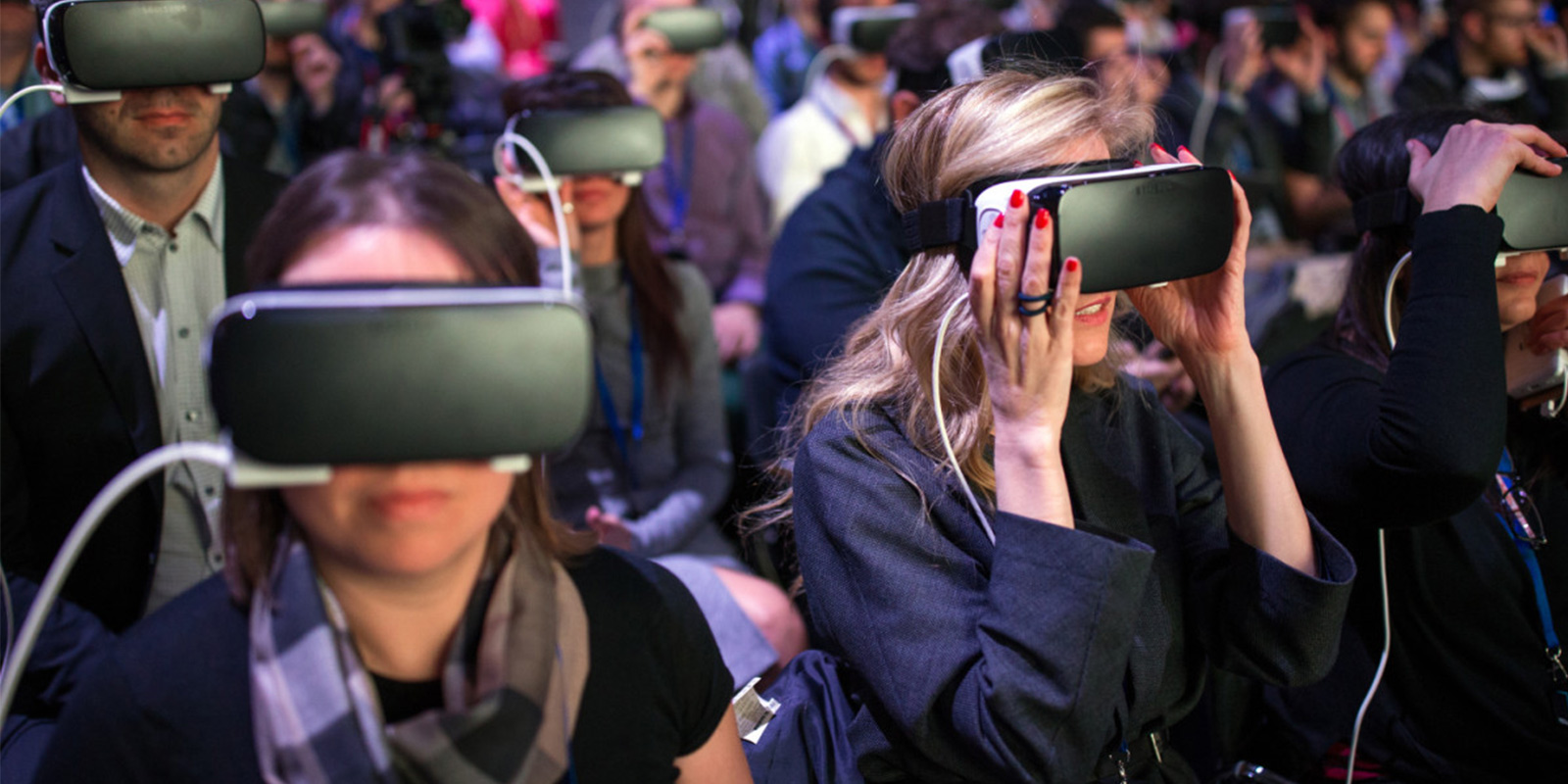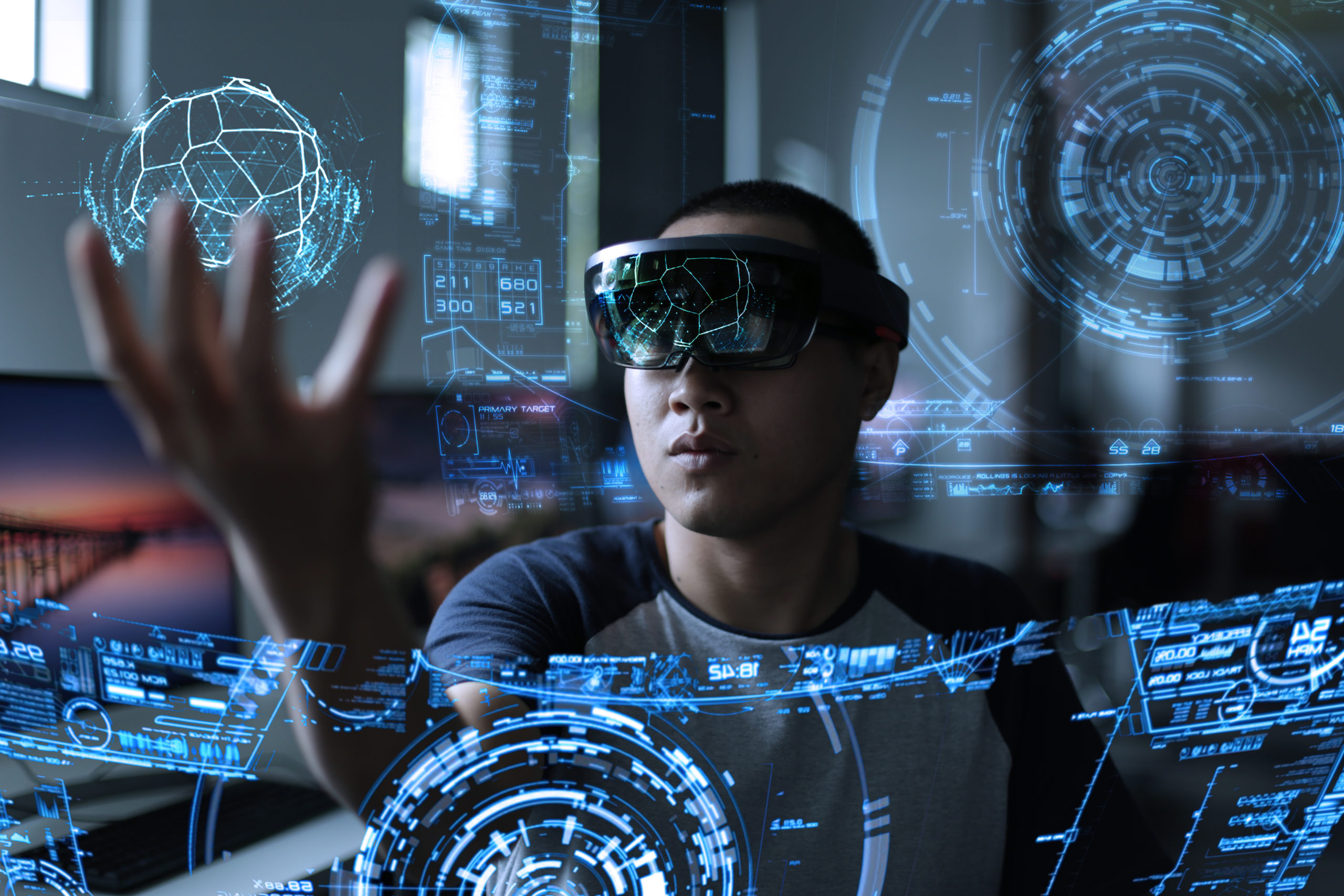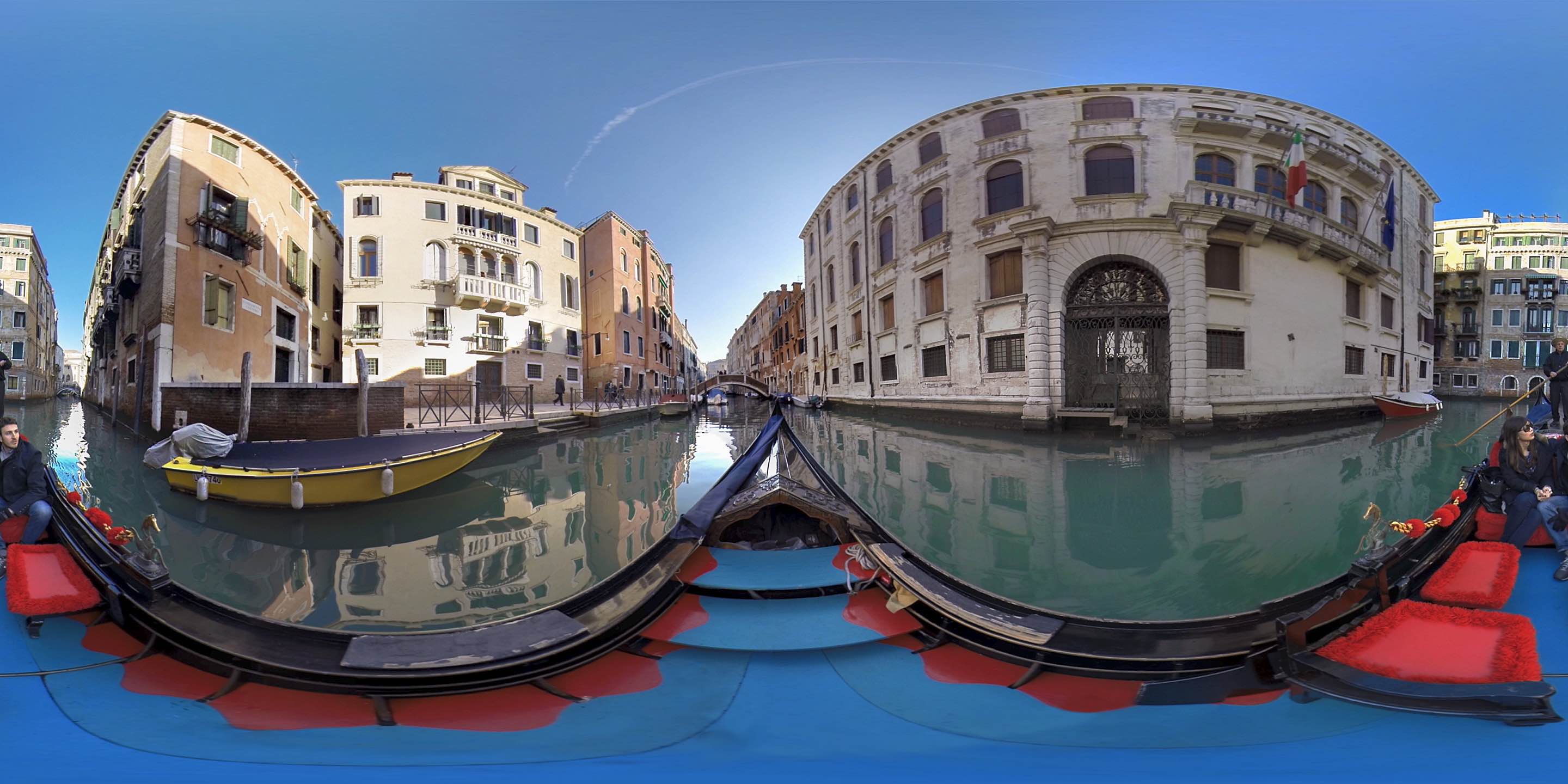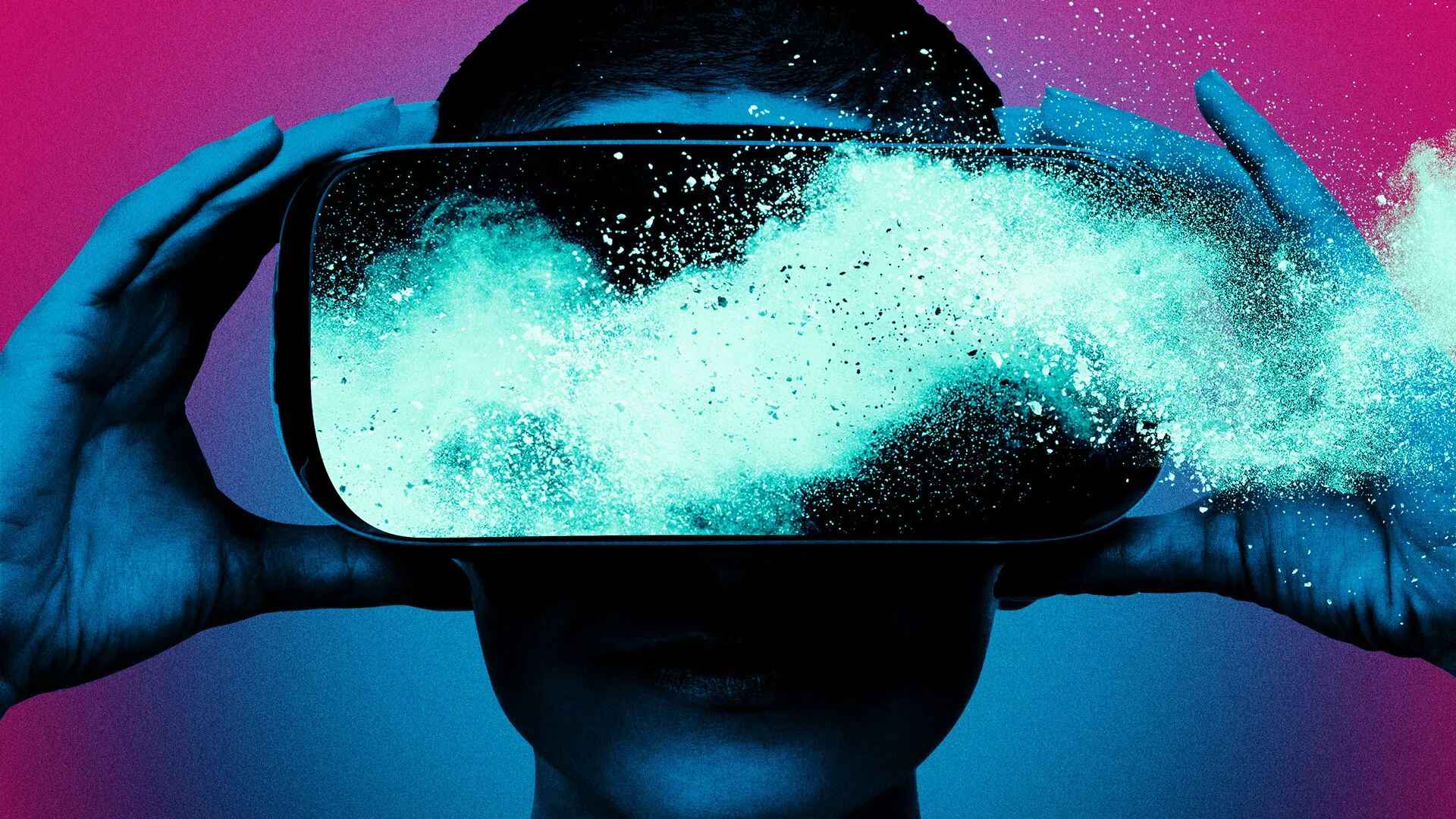Introduction
Welcome to the exciting world of virtual reality (VR)! With the rapid advancements in technology, VR has become more accessible to the general public, opening up a whole new realm of immersive experiences. If you’re curious about virtual reality and wondering what you need to embark on this thrilling journey, you’ve come to the right place.
Virtual reality refers to a computer-generated simulation that immerses users in a lifelike environment, giving them the feeling of being physically present in a virtual world. Through the use of specialized devices and software, VR can transport you to places you’ve never been, allow you to interact with virtual objects, and even enable you to engage with others in virtual communities.
Whether you’re an avid gamer looking to take your gaming experience to the next level or simply someone interested in exploring new possibilities, virtual reality has something to offer for everyone. From gaming and entertainment to education and training, the applications of VR span across various industries.
To fully enjoy the wonders of virtual reality, you’ll need a few essential components. In this guide, we’ll walk you through the items you need to get started on your VR journey, provide insights on different VR devices and their requirements, and offer tips to enhance your overall virtual reality experience.
So, buckle up, put on your VR headset, and let’s dive into the world of virtual reality!
What is Virtual Reality?
Virtual reality (VR) is a technology that simulates a realistic, immersive experience by creating a computer-generated environment that users can interact with. It involves the use of special devices, such as VR headsets, to provide a visual and auditory experience that tricks the senses into believing they are in a different reality.
In a virtual reality environment, users can explore and interact with virtual objects and spaces in a way that feels real. This is achieved through the use of 3D graphics, motion tracking sensors, and advanced display technology.
One of the main goals of virtual reality is to transport users to a different world, allowing them to experience things they might not be able to in their daily lives. VR can be used as a form of entertainment, education, training, and even therapy.
Virtual reality relies heavily on the concept of immersion. By immersing users in a simulated environment, VR aims to create a sense of presence, where users feel as though they are truly present in the virtual world. This is achieved through a combination of visual, auditory, and sometimes even tactile stimuli.
The success of virtual reality lies in its ability to trick the brain into perceiving the virtual environment as real. The headsets used in VR typically have built-in displays that cover the user’s field of view, providing a stereoscopic view of the virtual world. As the user moves their head, the sensors in the headset track their movements and adjust the perspective accordingly, giving the illusion of being in a different place.
Virtual reality has the potential to revolutionize various industries. In gaming, VR allows players to fully immerse themselves in virtual worlds, providing a more engaging and interactive experience. In education and training, VR can simulate real-world scenarios, allowing users to practice skills in a safe and controlled environment. In healthcare, virtual reality can be used for pain management, rehabilitation, and even treatment of certain mental health conditions.
As the technology continues to evolve, the possibilities of virtual reality are expanding. With more and more VR content being developed, the virtual reality experience is becoming more accessible and affordable for consumers.
Now that you have a better understanding of virtual reality, let’s explore what you can do with this exciting technology!
What Can You Do with Virtual Reality?
Virtual reality (VR) opens up a world of possibilities for entertainment, education, training, and even social interaction. Here are some of the exciting things you can do with virtual reality:
Gaming:
Virtual reality gaming takes the gaming experience to a whole new level. Instead of simply controlling a character on a screen, VR allows you to step into the game world and become fully immersed in the action. Whether you’re exploring a fantasy realm, racing in high-speed car simulations, or battling enemies in a first-person shooter, virtual reality gaming provides a thrilling and realistic experience that’s hard to match.
Exploration and Travel:
With virtual reality, you can explore places you’ve never been before without leaving your home. VR applications and experiences allow you to virtually visit iconic landmarks, travel to exotic destinations, and even explore outer space. It’s a great way to satisfy your wanderlust and experience new cultures and environments.
Education and Training:
Virtual reality has immense potential in the field of education and training. It can provide students with immersive and interactive learning experiences, allowing them to visualize complex concepts and theories. VR can also be used for training simulations in various industries, such as aviation, healthcare, and military, where users can practice skills and procedures in a realistic virtual environment.
Art and Creativity:
Virtual reality opens up new horizons for artists and creators. It allows them to create three-dimensional artwork and sculptures in a virtual space, pushing the boundaries of traditional art forms. VR art experiences also offer a unique and immersive way for people to engage with and appreciate art.
Social Interaction:
Virtual reality is not just limited to solo experiences. With the rise of social VR platforms, users can connect and interact with others in virtual spaces. Whether it’s attending virtual events, exploring virtual worlds together, or playing multiplayer games, virtual reality provides a new dimension to socializing and connecting with people from all around the world.
These are just a few examples of what you can do with virtual reality. As the technology continues to advance, we can expect even more innovative and exciting applications to emerge. So, put on your VR headset and get ready to dive into a world of endless possibilities!
Types of Virtual Reality Devices
Virtual reality (VR) devices come in various forms to cater to different needs and preferences. Here are the main types of VR devices available:
1. VR Headsets:
The most common and popular type of VR device is the VR headset. These head-mounted displays (HMDs) are worn on the head and cover the user’s eyes, providing a fully immersive visual experience. VR headsets range from high-end, tethered devices that require a powerful computer to operate, to standalone devices that have built-in processors and do not require additional equipment. Some well-known examples of VR headsets include the Oculus Rift, HTC Vive, and PlayStation VR.
2. Mobile VR Devices:
Mobile VR devices, such as Samsung Gear VR and Google Cardboard, use smartphones as the primary display and computational unit. These devices offer a more portable and affordable VR experience compared to high-end headsets. By inserting a compatible smartphone into the device and running VR apps or games, users can enjoy virtual reality on the go.
3. Augmented Reality (AR) Devices:
While not traditionally considered VR, augmented reality (AR) devices also provide immersive experiences by overlaying virtual objects onto the real world. AR devices, like Microsoft HoloLens and Magic Leap, allow users to see and interact with virtual elements in their physical environment. This technology has applications in gaming, education, and industrial sectors.
4. 360-Degree Cameras:
VR isn’t just about consuming content; it also allows users to create their own immersive experiences. 360-degree cameras capture video footage from all directions, allowing users to create virtual reality content that can be viewed in VR headsets or on platforms like YouTube and Facebook, providing a unique perspective and a feeling of presence.
These are the main types of virtual reality devices available in the market. The choice of device depends on factors such as budget, desired level of immersion, and specific use cases. Selecting the right device will ensure an optimal VR experience tailored to your needs.
Now that you’re familiar with the types of VR devices, let’s explore the requirements your PC needs to meet for a smooth virtual reality experience.
PC Requirements for Virtual Reality
Virtual reality (VR) provides a truly immersive experience, but it requires a powerful computer to run smoothly. Before diving into the world of VR, it’s important to ensure your PC meets the necessary requirements. Here are the key specifications to consider:
1. Processor (CPU):
A fast and powerful CPU is crucial for running VR applications. The minimum recommended processor for VR is usually an Intel Core i5 or AMD Ryzen 5. However, for optimal performance, it’s recommended to have a higher-end CPU like an Intel Core i7 or AMD Ryzen 7.
2. Graphics Card (GPU):
The graphics card is one of the most important components for a smooth VR experience. It’s responsible for rendering the detailed 3D graphics in real-time. High-end GPUs like the NVIDIA GeForce RTX series or AMD Radeon RX 6000 series are recommended to handle the demands of VR gaming and applications.
3. Memory (RAM):
Having enough RAM is essential for multitasking and running VR applications smoothly. The minimum recommended RAM for VR is typically 8GB, but it’s better to have 16GB or more to ensure optimal performance. More RAM allows for smoother gameplay and better overall system responsiveness.
4. Storage:
Vr applications can take up a significant amount of storage space. It’s recommended to have a solid-state drive (SSD) for faster loading times and smoother performance. A larger capacity SSD is recommended to accommodate VR games and applications, as they can be quite large in size.
5. Ports:
VR devices require specific ports for connectivity. Ensure that your PC has the necessary ports, such as HDMI or DisplayPort, to connect the VR headset. Additionally, having extra USB ports is beneficial for connecting additional VR accessories, such as motion controllers or external sensors.
6. Operating System (OS):
Most VR systems support both Windows and macOS, but it’s important to verify the compatibility of your chosen VR device with your specific operating system. Ensure that your OS is up to date and meets the requirements of the VR system you plan to use.
Keep in mind that these are general guidelines, and the specific requirements may vary depending on the VR headset or system you choose. It’s always recommended to check the manufacturer’s website or consult with a knowledgeable retailer to ensure your PC meets the exact specifications for your intended VR experience.
Now that you have a better understanding of the PC requirements for VR, let’s explore the different VR headsets available and help you choose the one that suits your needs.
VR Headsets: Which One to Choose?
When it comes to choosing a virtual reality (VR) headset, there are several options available. Each headset has its own strengths, features, and price points. Here are some popular VR headsets to consider:
1. Oculus Rift:
The Oculus Rift is one of the most well-known VR headsets on the market. It offers high-resolution displays, precise tracking, and excellent content library. The Oculus Rift requires a powerful gaming PC to run and provides an immersive VR experience for gaming and entertainment enthusiasts.
2. HTC Vive:
The HTC Vive is another top-tier VR headset that offers immersive room-scale tracking. It comes with base stations and motion controllers, allowing users to move freely in their physical space. The HTC Vive is a great choice for those who want a more interactive and immersive VR experience.
3. PlayStation VR:
Designed specifically for PlayStation gamers, the PlayStation VR (PSVR) is a VR headset that works in conjunction with the PlayStation 4 console. It offers an accessible and affordable entry point into virtual reality gaming. The PSVR has a solid library of games and provides a comfortable and enjoyable VR experience.
4. Oculus Quest:
The Oculus Quest is a standalone VR headset that does not require a PC or external sensors. It offers a wireless and portable VR experience, making it easy to set up and use. The Oculus Quest is a versatile headset that caters to both gaming and non-gaming VR experiences.
5. Valve Index:
The Valve Index is a high-end VR headset that offers impressive visuals, precise tracking, and excellent audio quality. It provides a premium VR experience with advanced features such as finger tracking and a wider field of view. The Valve Index is well-suited for hardcore gamers and VR enthusiasts who want the best possible experience.
These are just a few examples of popular VR headsets, and there are many more options available in the market. When choosing a VR headset, consider factors such as budget, the level of immersion you desire, the availability of compatible VR content, and the specific requirements of the headset (such as PC compatibility or standalone capabilities).
It’s also helpful to read reviews, try out different headsets if possible, and consider your personal preferences and needs. Each VR headset has its own unique features and advantages, so take the time to research and choose the one that best aligns with your VR goals.
Now that you have an idea of the different VR headsets available, let’s delve into controllers and accessories that can enhance your virtual reality experience.
Controllers and Accessories for Virtual Reality
When it comes to virtual reality (VR), controllers and accessories can greatly enhance the immersion and interactivity of your VR experience. These peripherals allow you to interact with the virtual environment, providing a more intuitive and engaging gameplay. Here are some popular controllers and accessories to consider:
1. Motion Controllers:
Motion controllers are handheld devices that track your hand movements in VR. They enable you to reach out, grab objects, and manipulate the virtual environment. Many VR headsets come with motion controllers, such as the Oculus Touch for the Oculus Rift or the HTC Vive controllers. These controllers typically have built-in buttons, triggers, and touch-sensitive pads to provide precise input.
2. VR Gloves:
VR gloves offer a more immersive and natural way of interacting with virtual objects. They track the movement of your fingers and hands, allowing you to touch and manipulate virtual elements with more accuracy and realism. VR gloves can enhance the level of immersion in games, simulations, and training applications, making it feel like you’re truly using your hands in the virtual world.
3. VR Treadmills and Locomotion Devices:
For users who want to physically move in the VR space, VR treadmills and locomotion devices provide an alternative to traditional thumbstick-based movement. These devices enable you to walk or run on a specialized platform that translates your movements into in-game locomotion. They provide a more immersive and natural way to navigate virtual environments, enhancing the feeling of presence and physicality.
4. Haptic Feedback Devices:
Haptic feedback devices add a sense of touch and tactile feedback to your VR experience. These devices can simulate sensations such as vibrations, impacts, or textures. They enhance the immersion in VR by providing physical feedback that corresponds to in-game events or interactions, making the virtual environment feel more realistic and engaging.
5. VR Accessories:
There are various other accessories available to further enhance your VR setup and experience. These include stands and mounts for VR headsets, protective covers or skins, cable management systems, and even specialized VR platforms or play areas. These accessories can improve comfort, organization, and overall usability.
When choosing controllers and accessories for VR, consider factors such as compatibility with your VR headset, the types of experiences you want to have, and your budget. Research and read reviews to find the best options that suit your needs and preferences.
Remember, controllers and accessories can provide an extra layer of realism and immersion, making your VR experience more enjoyable and engaging. So, explore the available options and enhance your virtual reality adventures!
Now that you know about controllers and accessories, let’s move on to setting up your virtual reality space.
Setting Up Your Virtual Reality Space
Creating an optimal virtual reality (VR) experience involves setting up a dedicated space that allows for freedom of movement and ensures safety. Here are some key considerations when setting up your VR space:
1. Clear the Area:
Start by clearing the space of any obstacles that could interfere with your movement or pose a safety hazard. Remove furniture, sharp objects, and fragile items from the area. The more open space you have, the better your VR experience will be.
2. Define Boundaries:
Most VR systems require you to define boundaries within which you can move. This is done using software or external sensors. It’s important to follow the instructions provided by your VR headset to accurately set up these boundaries. This will help prevent accidents and keep you within a safe playing area.
3. Consider Flooring:
If possible, choose a smooth, non-slip flooring surface for your VR space. Carpet or mats can provide cushioning and reduce the risk of slips or falls. Avoid highly reflective surfaces or ones with strong patterns, as they can interfere with tracking and affect the VR experience.
4. Adequate Lighting:
Ensuring proper lighting in your VR space is important. Avoid excessive brightness or direct sunlight, as it can interfere with the VR headset’s tracking. It’s ideal to have even lighting throughout the space to enhance visibility and tracking accuracy.
5. Cable Management:
VR systems typically have cables that connect the headset to the PC or console. Implement cable management solutions, such as hooks, clips, or cable covers, to keep the cables organized and out of your way. This not only prevents tripping hazards but also improves mobility and reduces the risk of accidentally pulling cables.
6. Comfort and Ventilation:
Wear comfortable clothes and shoes that allow for easy movement. VR sessions can get physically intense, so ensure proper ventilation in the room to avoid discomfort due to overheating. Consider using a fan or ensuring the room has adequate airflow to keep you cool during extended play sessions.
7. Safety Precautions:
Always follow safety guidelines provided by the manufacturer of your VR headset. Take breaks during extended play sessions to prevent eyestrain or fatigue. If you have pre-existing health conditions, consult with a healthcare professional before engaging in intense VR activities.
By setting up your virtual reality space properly, you’ll be able to fully immerse yourself in the VR experience while ensuring your safety and comfort. Take the time to optimize your space, and get ready to explore the exciting virtual worlds that await!
Now that your virtual reality space is ready, let’s discover some recommended VR games and experiences that you can enjoy.
Recommended Virtual Reality Games and Experiences
Virtual reality (VR) offers a vast array of immersive gaming experiences and interactive content. Here are some highly recommended virtual reality games and experiences that will transport you to incredible virtual worlds:
1. Beat Saber:
In Beat Saber, you wield virtual light sabers and slash through blocks to the beat of energetic music. This rhythm-based game combines music, lightsaber combat, and addictive gameplay, making it a popular choice for VR enthusiasts of all ages.
2. Superhot VR:
Superhot VR is an action-packed game where time moves only when you move. It challenges you to dodge bullets, take down enemies, and solve puzzles in a visually striking, slow-motion VR world. The innovative time mechanics and intense gameplay make it a must-play for VR gamers.
3. Half-Life: Alyx:
Half-Life: Alyx is a critically acclaimed VR game that takes place in the Half-Life universe. As Alyx Vance, you navigate through a captivating and immersive story, solving puzzles, battling enemies, and uncovering secrets. The game showcases the potential of VR storytelling, delivering an unforgettable experience.
4. The Walking Dead: Saints & Sinners:
In this gritty VR game, you find yourself in a post-apocalyptic New Orleans filled with zombies. The Walking Dead: Saints & Sinners offers intense combat, challenging choices, and a deep storyline in a VR-exclusive adventure that tests your survival skills and moral compass.
5. Job Simulator:
Job Simulator is a humorous and light-hearted VR experience that puts you in comical, exaggerated versions of real-world jobs. From cooking in a gourmet kitchen to repairing cars, you’ll explore different scenarios and complete humorous tasks, making it an enjoyable option for VR newcomers and veterans alike.
6. Google Earth VR:
Google Earth VR allows you to explore the globe from a VR perspective. Fly over cities, explore landmarks, and visit your dream destinations in a fully immersive experience. It’s a fantastic tool for virtual tourism and a great way to witness the beauty of the world without leaving your home.
These are just a few examples of the incredible VR games and experiences available. The VR landscape is continually evolving, with new titles and experiences being released regularly.
Before diving into any game or experience, ensure that your PC or VR headset meets the required specifications mentioned by the developer. Additionally, check user reviews and gameplay videos to get a sense of what each title offers and whether it aligns with your interests.
Now, get ready to step into these virtual worlds and embark on extraordinary adventures with virtual reality!
Do you need any further assistance?
Tips for a Great Virtual Reality Experience
Virtual reality (VR) can provide an incredibly immersive and thrilling experience. To make the most out of your virtual reality adventures, here are some tips to enhance your VR experience:
1. Clear Play Area:
Ensure you have a clear and uncluttered play area that allows for freedom of movement. Remove any objects that could pose a safety hazard or obstruct your movement while wearing the VR headset. This will help prevent accidents and ensure a more enjoyable experience.
2. Adjust Headset Properly:
Take the time to properly adjust your VR headset for a comfortable and clear view. The headset should fit snugly but not too tightly, ensuring it stays in place during gameplay. Adjust the straps and interpupillary distance (IPD) settings to achieve the best clarity and comfort.
3. Stay Hydrated and Take Breaks:
VR experiences can be physically engaging and mentally absorbing. Remember to stay hydrated by drinking water before, during, and after your VR sessions. Additionally, take regular breaks to rest your eyes and avoid prolonged sessions to prevent fatigue and discomfort.
4. Calibrate and Recalibrate:
Calibrate your VR system as instructed by the manufacturer to ensure optimal tracking accuracy. If you experience any tracking issues, try recalibrating or adjusting the lighting conditions in your play area. Proper calibration can significantly improve the VR experience.
5. Optimize Graphics Settings:
Adjust the graphics settings in VR games to strike a balance between visual quality and smooth performance. Lower settings can help maintain a consistent frame rate and minimize motion sickness, while higher settings can provide better visual fidelity. Experiment to find the right balance for your system.
6. Use Headphones and 3D Audio:
Wearing headphones while in VR not only provides a more immersive audio experience but also helps block out external distractions. Many VR games and experiences offer 3D audio, which enhances the sense of presence by providing spatial sound effects. Make sure to use headphones that are compatible with your VR system.
7. Engage in Regular Maintenance:
Keep your VR equipment clean and maintained for optimal performance and longevity. Clean the lenses and headset regularly following the manufacturer’s instructions. Store your VR headset and accessories in a safe and dust-free place when not in use.
8. Explore and Try Different Experiences:
Don’t limit yourself to just one type of experience or game genre. Explore a variety of VR games, educational apps, social platforms, and creative experiences. Trying different experiences will help you discover new ways to enjoy the immersive world of virtual reality.
By following these tips, you can ensure a more comfortable, enjoyable, and immersive virtual reality experience. Remember to always prioritize safety, take care of your equipment, and most importantly, have fun as you dive into the wonders of virtual reality!
If you have any more questions or need further assistance, feel free to ask.
Conclusion
Virtual reality (VR) has revolutionized the way we experience digital content, offering immersive and interactive experiences that transport us to new worlds. With the right equipment, setup, and knowledge, you can make the most out of your virtual reality adventures.
In this guide, we’ve explored the world of virtual reality, discussing what it is and the incredible possibilities it offers. We’ve delved into the types of VR devices available, the PC requirements needed for a smooth VR experience, and the various controllers and accessories that can enhance your immersion and interaction. We’ve also provided tips on setting up your virtual reality space, recommended popular VR games and experiences, and shared insights to ensure a great VR experience.
Remember, when choosing a virtual reality headset, consider your budget, the level of immersion you desire, and the specific requirements that meet your needs. Keep your VR space clear, comfortable, and free from hazards to ensure safety and freedom of movement. Take breaks, stay hydrated, and optimize your VR settings to prevent discomfort and fatigue. And most importantly, have fun exploring the vast and exciting world of virtual reality.
As virtual reality technology continues to evolve and improve, we can expect even more amazing experiences to be developed. Whether you’re a gamer, an artist, an educator, or someone seeking new adventures, VR has something to offer for everyone.
Now that you have the knowledge and tools to embark on your VR journey, go ahead and let your imagination run wild in the immersive landscapes of virtual reality. Get ready to dive into the virtual world and create memories that will undoubtedly leave you in awe.
If you have any further questions or need assistance along the way, don’t hesitate to reach out. Happy VR exploring!









